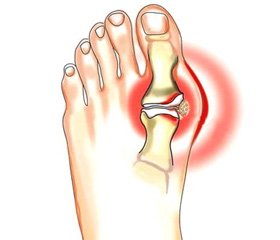Журнал «Боль. Суставы. Позвоночник» 2 (18) 2015
Вернуться к номеру
The Influence of Sartants on the Gout Course
Авторы: Solyeyko O., Stepaniuk O., Stepaniuk T., Korobko O. - Vinnytsia National Medical University named after N.I. Pyrogov, Vinnytsia, Ukraine
Рубрики: Ревматология, Травматология и ортопедия
Разделы: Медицинские форумы
Версия для печати
Статья опубликована на с. 96-97
Introduction. Modern science considers the level of uric acid as a risk factor for cardiovascular pathology. Hyperuricemia is the basis for the gout development. The doubled increase in number of diagnosed gout cases and related complications in the last decade requires finding new aspects of pathogenesis and treatment approaches. Today, the largest percentage of use as antihypertensive agents in the world belongs to sartans group. Special place among numerous of sartans pleiotropic properties belongs to uricozuric effect of this group of drugs. Multicenter trials that investigated the influence of sartans on the course of arterial hypertension, only stated their influence on the level of uric acid in the blood. But, there is no evidence of sartans influence on the gout course.
Aim. To study the influence of sartans on the gout course.
Materials and methods. During the years of 2013–2014, we have examined 63 of male patients suffered from gout. Patients were randomized into two groups: the first consisted of patients (30 people) who took conventional treatment of gout, the second one (33 people) — those, who took sartans as a part of comprehensive treatment of this disease. The average duration of sartans use for group II of patients was 8.3 ± 0.7 months. Both groups were representative by age, level of uric acid, hyperlipidemia before the treatment, the level of process activity, the number of patients with burdened family heredity. The average age of patients in the first group was 43.4 ± 1.5 years, and group II — 45.6 ± 1.3 years. Uric acid levels before treatment were: 0.53 ± 0.11 mmol/l, 0.54 ± 0.10 mmol/l, respectively, in groups I and II. Hyperlipidemia was determined with 56.6 % of patients in group I and 54.56 % — group II. Process activity of II degree (42.4 and 43.4 %, respectively) was observed in most patients of groups I and II. The percentage of patients with burdened family heredity in group I was 13.3 %, in II — 21.2 %.
Results. Analysis of anamnestic and clinical and instrumental features revealed that the most patients of group I (46.7 %) the beginning of the disease covered live period from 40 to 50 years, the start period of the disease for most patients of group II (45.5 %) covered live time from 50 to 60 years. Group I had big number of patients with disease experience from 5 to 10 years (56.6 %), in group II dominated the percentage of patients with disease experience from 2 to 4 years (54.5 %). Patients were divided under number of injured joints as follows: monoarthritis of traditional localization was observed in 10 % of patients in group I and 24.3 % of patients in group II. Injury of 8–10 joints, however, prevailed in group I of patients (36.7 % of patients) compare to group II (27.3 %). 30 % of patients in group I showed commitment to constant treatment and 65 % — group II. At the same time, the treatment only during disease aggravation support 60 % of patients in group I and 25 % — group II. In both groups, most patients had II degree of radial process (60 and 54.5 %, respectively). But 66.6% of patients in group II had I degree of joints dysfunction, whereas II degree dysfunction dominated in group I (63.4 %). Except articular dysfunctions, tophi dominated in patients of group I (23.3 % of patients), while groups I and II did not differ in percent of diagnosed gouty kidney (10 and 9.1 %, respectively). Among accompanying pathology in patients of both groups hypertension (63.3 and 42.4 %) and obesity (77.3 and 60.6 %) dominated. Hyperinsulinemia and diabetes significantly predominated in group I of patients, which correlated with a greater percentage of tophi in the same group.
While treatment the required level of uric acid 0.38 ± ± 0.01 mmol/l was gotten only in patients of group II, whereas uric acid was 0.46 ± 0.01 mmol/l in patients of group I.
Conclusion. Hereby long–term use of sartans in patients with gout leads not only to sustained reduction of uric acid contain in the blood serum, but also to improvement in the course of articular syndrome and reduction of the severity extraarticular dysfunctions and comorbidity percent.

